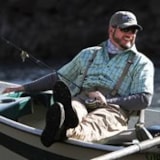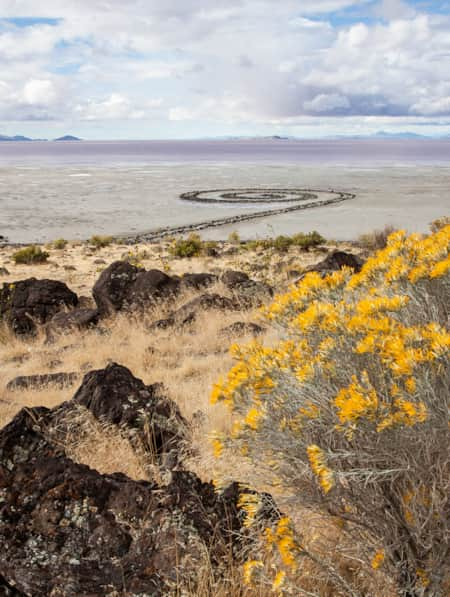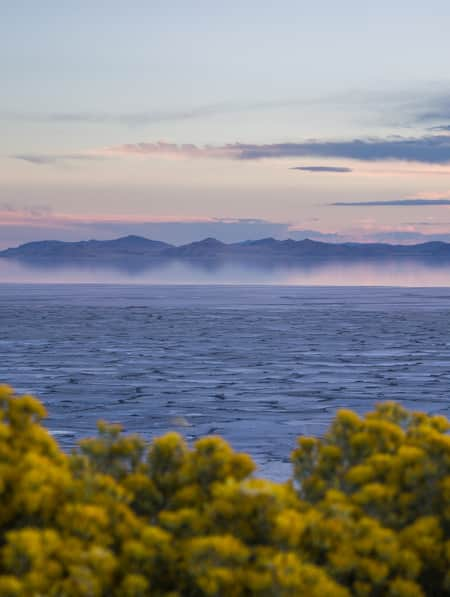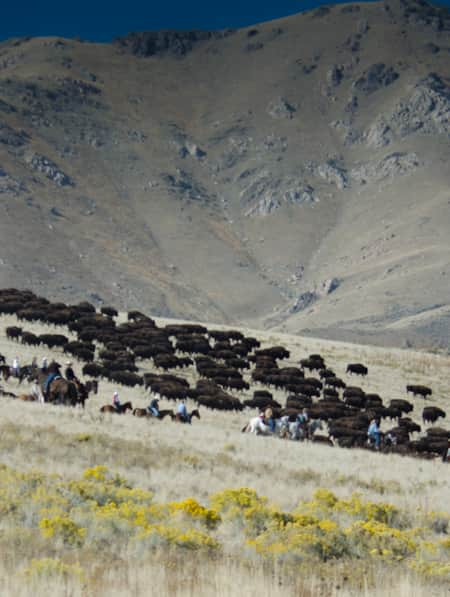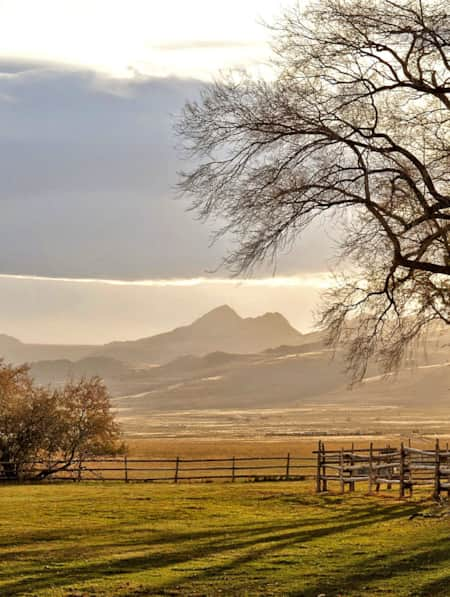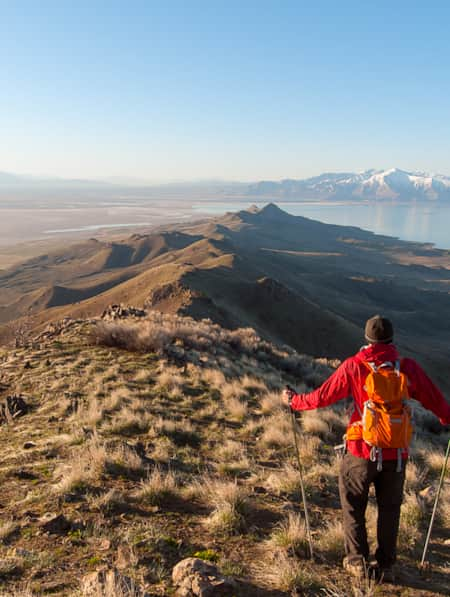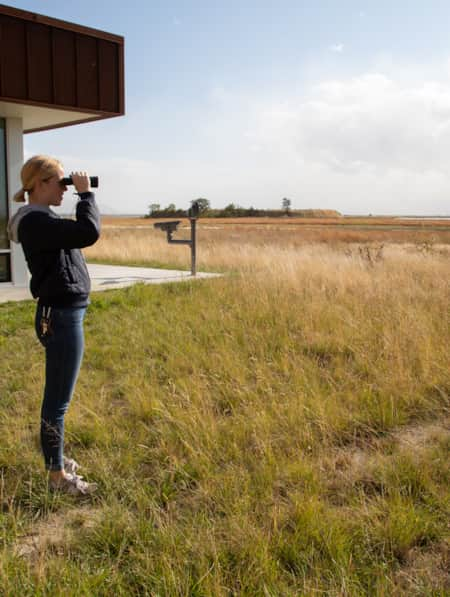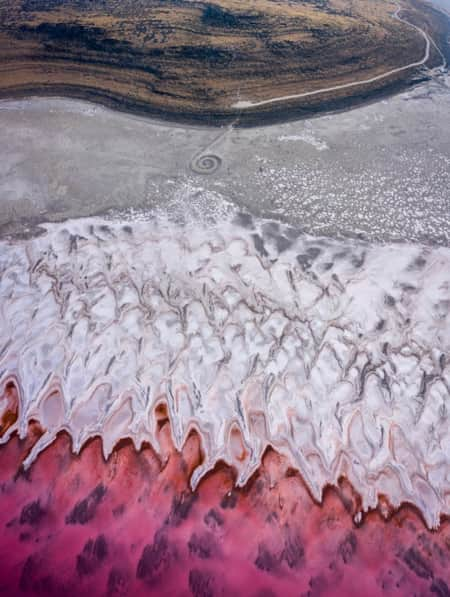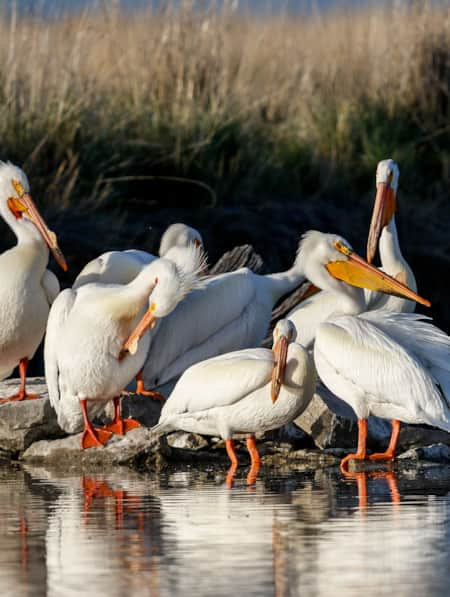Mysteries of the Great Salt Lake
A career studying one of the most unique ecosystems in the world might be smelly, but Jaimi Butler wouldn’t trade her time on Great Salt Lake for anything.
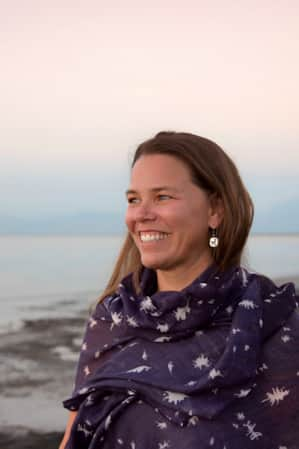
Among the myriad of connections Jaimi Butler has with the Great Salt Lake ecosystem, one random and meaningful incident from some 15 years ago stands out.
It started with an unexpected call — aren’t they all? — from the Tooele City Police Department. Two things had been discovered along the shores of the Great Salt Lake: a body and message in a bottle.
Butler's name and phone number were found inside the bottle, so the officer asked her to confirm who she was, her connection to the Great Salt Lake and if she was okay.
Her connection to the lake: Where would she even start? Butler, a biologist, thought for a minute before settling on the response she thought the officer wanted to hear: “I work on the lake,” she said.
After she hung up, Butler pondered the bottle and the body — the accidental connection of the two — and that coincidence sparked an even deeper appreciation of a place she was already obsessed with. It took her years to understand the mystery.
Learning About Great Salt Lake
Like most people growing up along the Wasatch Front, Butler didn’t know much about the large body of water Utah’s capital city is named after. She knew the air around her childhood home in Murray would sometimes smell when storms swept across the Great Salt Lake. She recalls a 1980s drive with her dad to see lake waters flooding Interstate 80 west of Tooele, but that trip turned out to be more about the high water and not the lake itself.
Butler also recalls a field trip during her senior year at Murray High when her AP biology class was set to study the lake. Instead of netting brine shrimp and viewing shorebirds, Butler was home sick in bed. She remembers being bummed about missing the trip, but she was on her way to Utah State University and didn’t have time to think about the Great Salt Lake. But fate threw back to the salty lake when her first job out of college turned out to be studying eared grebes on the lake.
It would be a major understatement to say Butler has built her 19-year career immersing herself in studying the unique creatures living in the Great Salt Lake.
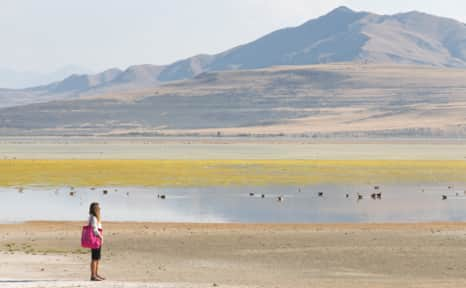
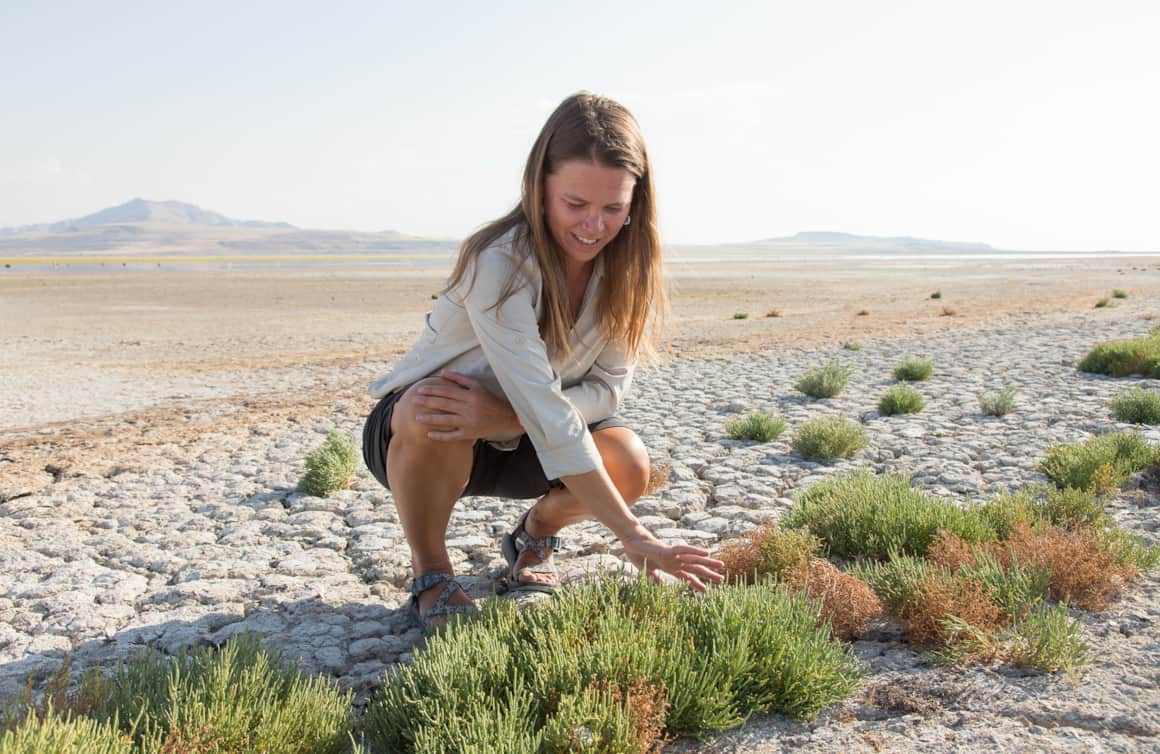
Jaimi Butler at Antelope Island State Park
In her first professional job, she worked to quantify how much the birds relied on brine shrimp and their cysts to help determine regulatory harvest limits. She then became a state wildlife biologist focused on the Great Salt Lake ecosystem. Now she coordinates the Great Salt Lake Institute, which she co-founded with colleague Bonnie Baxter at Westminster College.
She has heard all the complaints: about the smell, the bugs, the spiders and the mud. Butler understands those concerns might turn away some visitors, but to her those visceral elements represent the life – and eventual death – of an incredibly important place.
“One of the misconceptions of the lake I really love to beat out of people is this idea that it is just salty water and nothing lives there,” she said. “If nothing lives there, what makes it stink? In the wide view, the lake just isn’t contained within its shores. More than 22,000 square miles of watershed feed the lake.”
"One of the misconceptions of the lake I really love to beat out of people is this idea that it is just salty water and nothing lives there. If nothing lives there, what makes it stink?"
– Biologist Jaimi Butler
Experiencing Great Salt Lake
A lot of her time studying, teaching and loving the Great Salt Lake involves mud, bugs and smells that remind her of those childhood storms. This fact hit home home a few years ago when one of her children caught a whiff of a storm that had blown into the Salt Lake Valley across the lake. Butler tried not to take it personally when her own flesh and blood said: “Ah, that storm smells like you.”
During her time as a fisheries and wildlife management student at Utah State University, Butler worked as a seasonal technician tracking foxes, skunks and raccoons to determine their range on the Bear River Migratory Bird Refuge on the lake’s northeast edge.
While working there, Butler developed a passion for birds. The wide variety of colorful and charismatic birds prompted the purchase of her first bird guide book and set her on the way to being what she characterizes as a “bird nerd.”
She was hired to work on the grebe study when the brine shrimp industry and state wildlife officials wanted to better understand just how much the birds relied on the tiny, unique creatures for food.
Butler found herself swimming on the Farmington Bay of the Antelope Island causeway trying to catch grebes as part of the study. She became a fixture at the docks at the end of the causeway, while she worked to document how long grebes dive and how often they preen.
Want to venture a guess how many brine shrimp grebes eat in one day? Nope — more. Butler’s research showed that brine shrimp are by far the major nourishment for grebes, and the bird’s average consumption of brine shrimp is roughly 28,000 every day. Considering grebes only actively feed for seven hours a day, that means the birds are eating two brine shrimp every second during their feeding time. Now, imagine a population of between four and five million grebes on the Great Salt Lake at any given time.
Butler continued her exploration of the lake and the surrounding environments working as a wildlife biologist with the Utah Division of Wildlife Resources’ Great Salt Lake Ecosystem Program. That experience led to Butler’s current position at Westminster College, where her goal is to share all she has learned about the lake. She works directly with students at Westminster and collaborates with teachers to create high school and college curriculum about the lake.
Part of her work involves supervising a summer undergraduate research program. Much of that research has been focused on the American white pelicans of Gunnison Island, where 15 PELIcams capture pictures every three minutes on the protected breeding ground. (Listen to Butler explaining the pelican research on National Public Radio’s Science Friday in 2018.)
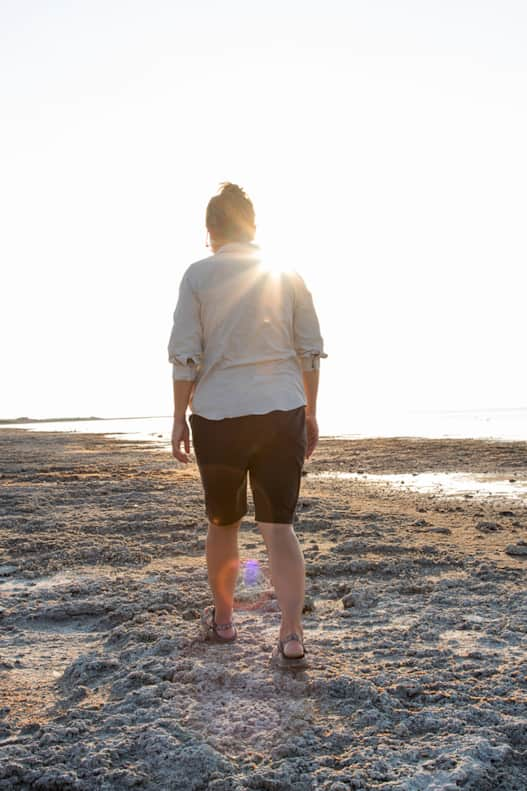
A lot of Butler's time studying, teaching and loving the Great Salt Lake involves mud, bugs and smells that remind her of her childhood.
Photo: Nicole Morgenthau
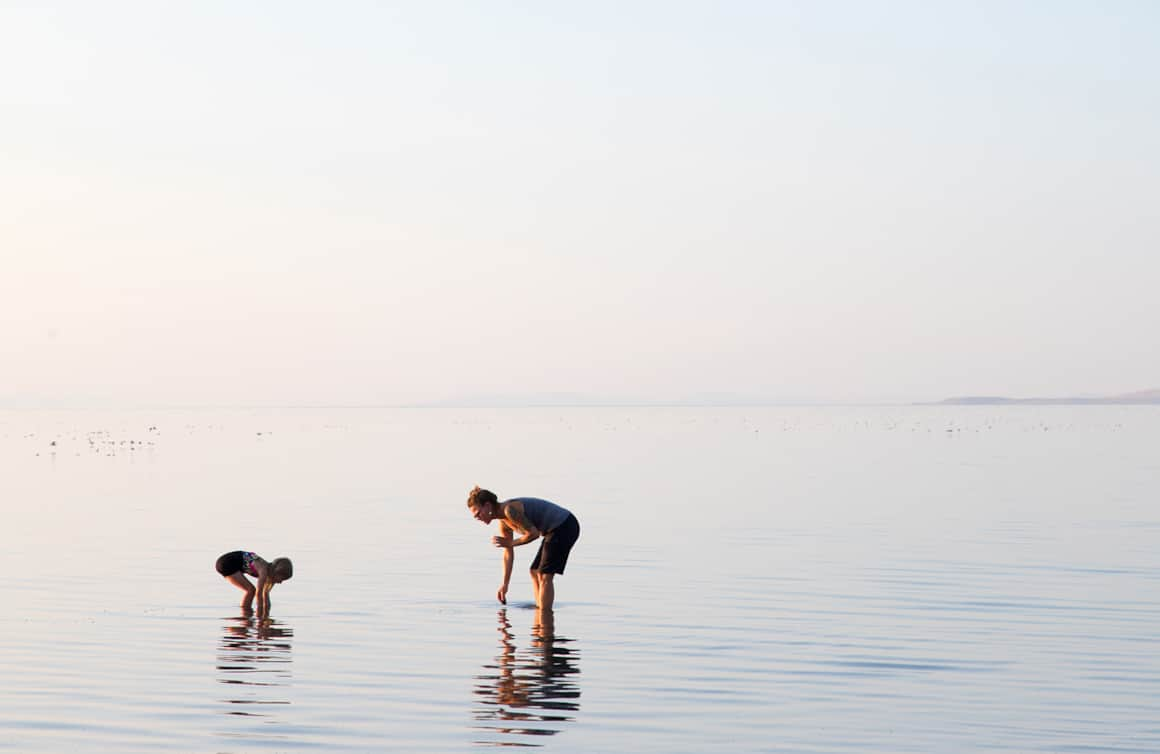
Biologist Jaimi Butler and her daughter examine the fauna of the Great Salt Lake.
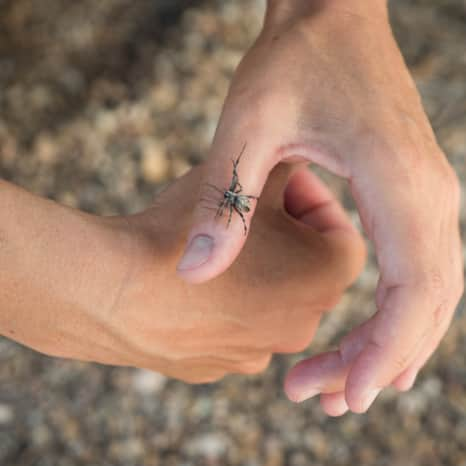
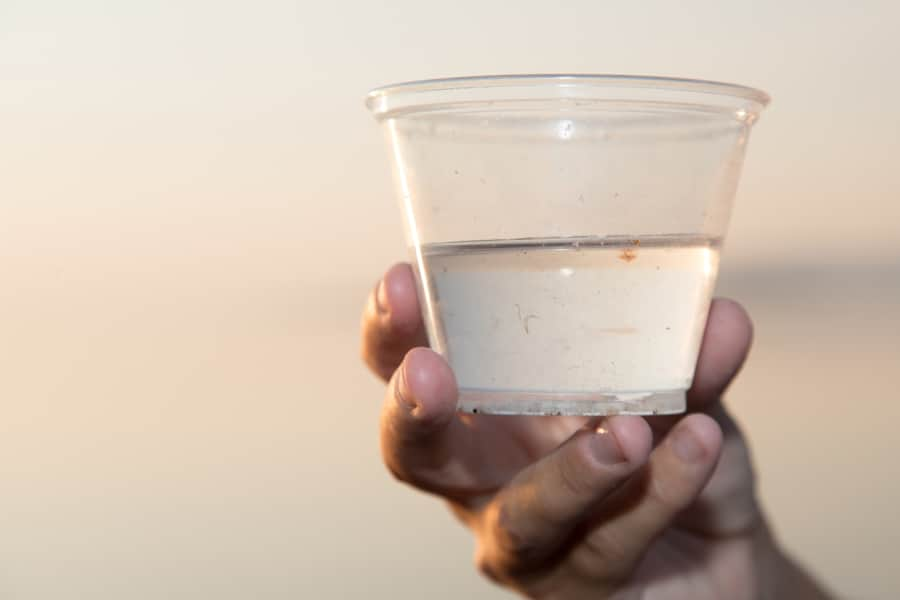
A Personal Profession
The lake is her life, Butler tells people, and it’s also, in fact, part of her body. In addition to the countless random insects she has inhaled through the years, Butler has also purchased a bison at the annual Antelope Island auction and served the meat to her family.
The lake is also imprinted on her skin. It’s quite possible Butler is one of the few people on the planet who sport brine shrimp tattoos. “Brine shrimp tattoos are not as popular as they should be,” Butler said.
Tattooed on her left arm and shoulder is a view of the Promontory Mountains as seen from Gunnison Island with eight brine shrimp swimming below, 25 pelicans soaring above and 19 sandhill cranes flying by. She got the ink after submitting proofs for the lake biology book: “An epic project needed an epic prize at the end.”
Hints of the Spiral Jetty, the massive environmental landscape art along the northeast shore of Great Salt Lake, is also represented in the swirl of flying pelicans. “It is a celebration of the things that I am proud of,” Butler said of the tattoos.
She’s also proud of the books she has helped create about Great Salt Lake. They are aimed at different audiences, but together serve as educational tools expressing the value of the lake.
“The Great Great Salt Lake Monster Mystery” (Salty Sirens, 2019, $20) is a children’s book sharing the adventure of searching for a monster and learning about the lake on the way. Butler co-authored the book with Baxter and the two call themselves the Salty Sirens. The story was inspired by their experiences at the lake with their children. Butler, 44, has two children, John, 19 and Cora, 8.
The Sirens also combined to create “Great Salt Lake Biology," (Springer International Publishing, 2020, $169.99) a collection of diverse scientific research conducted on the lake and the surrounding environments, looking toward the future of the lake’s massive but delicate ecosystem. (Read: Great Salt Lake Needs Your Visit)
With all the time Butler spends working on or talking about Great Salt Lake, you might think she would elect to spend her own time in other places. Not so. Back in 2001, she started to do a volunteer waterbird survey on the Antelope Island causeway for the Utah Division of Wildlife Resources. She took a break for a bit, but returned to the survey in 2005 and now commits to five surveys annually.
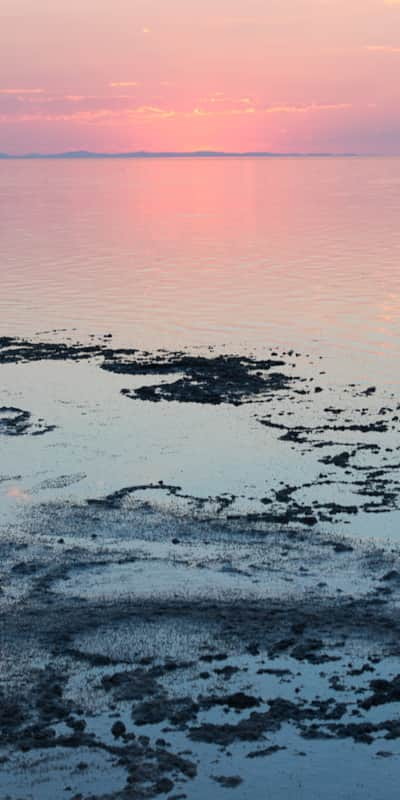
"I am her and she is me. We are all Great Salt Lake."
– Biologist Jaimi Butler
Human Connections to Great Salt Lake
Butler spent a lot of time with brine shrimp harvesters on their boats when she first started working on the lake. She enjoyed the camaraderie of the hard-working shrimpers and forged strong relationships with them. In fact, she occasionally delivered bottles of wine as gifts, grateful for what she learned from shrimpers about their industry, and the lake and its ecosystem.
She had no idea they were recorking the wine bottles with her name and phone number inside on notes inside. That one of those bottles would end up connecting her to a possible murder mystery ended giving her more than the heebie-jeebies. It also brought her a new perspective on the lake she has spent so much time studying.
When that torso of a woman showed up in Stansbury Harbor more than a decade and a half ago, officers combed the surrounding area and found one of those wine bottles. They followed the intent of the senders and placed a call to Butler.
She never heard anything from the police about the investigation, but years later happened upon someone familiar with the case. He told her the remains were 400 years old, and likely those of a Native American woman.
Butler likes to say she’s sometimes mistaken for a 400-year-old dead body, but joking aside, she feels a strong connection to that woman. “I think of her a lot,” she said. “I imagine her being out and providing for her family in a place where she was born and loved. Taking advantage of the crazy abundance of life that is Great Salt Lake,” Butler told a RadioActive audience at a KRCL-Radio event in 2016. “I am her and she is me. We are all Great Salt Lake.”
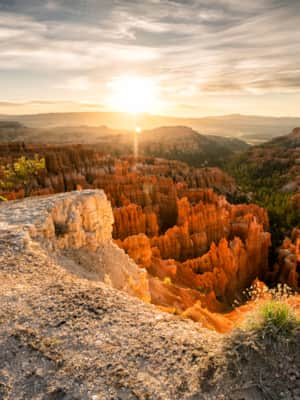
Field Guides: Voices From the Utah Landscape
Meet the people whose lives have been shaped by nature — and are helping others find their way.
What's Nearby
-
Salt Lake City
Salt Lake City makes a great gateway for travelers visiting Utah's ski resorts or southward to Utah’s renowned red rock country.
-
Antelope Island State Park
Antelope Island State Park is 25 miles north of Salt Lake City. Accessed by a causeway, the island sits in Great Salt Lake and features free-roaming bison and antelope herds.
-
Ogden
Ogden is an outdoor recreation mecca. It has also worked to restore its historic Art Deco architecture and buildings and blend in new development toward a charming and vibrant downtown.
-
Brigham City
Brigham City's Main Street archway proclaims "Gateway to the World's Greatest Wild Bird Refuge." Brigham City boasts a small-town feel with big-city amenities like comfortable and affordable hotel rooms, deluxe suites, and beautiful golf courses.
-
Bear River Migratory Bird Refuge
This is the Bear River Migratory Bird Refuge, an eye-opening stop along Utah's populous Wasatch Front for any traveler and a top destination for any serious birder with gaps on their life lists.
